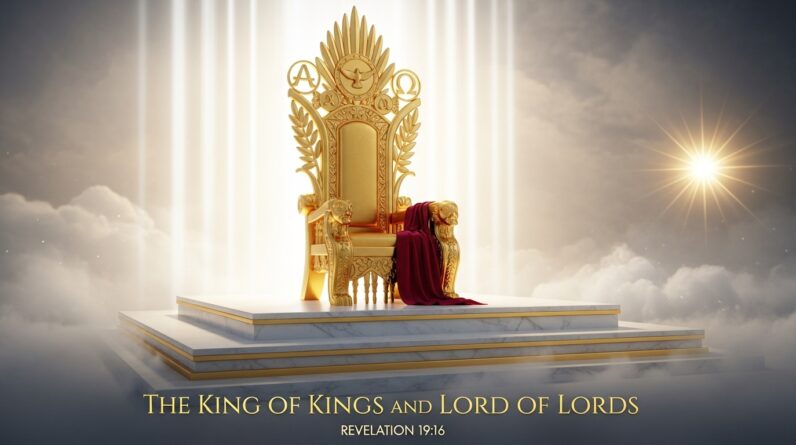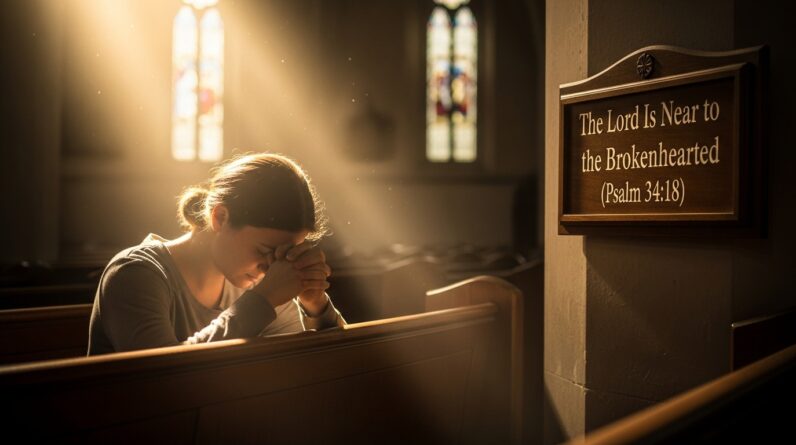In the timeless tale of the crucifixion and resurrection of Jesus, we witness the ultimate act of sacrifice and the promise of salvation. This extraordinary story showcases the selfless actions of Jesus as he willingly lays down his own life to atone for the sins of humanity. Through his sacrifice, we are taught the profound lesson of giving up something of great value for the benefit of others. Moreover, the resurrection serves as a testament to the transformative power of faith and the assurance of eternal life. As we explore this remarkable narrative, we uncover profound insights into the significance of sacrifice and the boundless depths of God’s love for us all.

This image is property of images.unsplash.com.
I. The Crucifixion of Jesus
A. Jesus’ Betrayal and Arrest
The story of the crucifixion and resurrection of Jesus begins with his betrayal and arrest. Jesus was betrayed by one of his disciples, Judas Iscariot, who sold him out to the religious authorities for thirty pieces of silver. He was then arrested by the Roman soldiers and taken into custody.
B. Jesus’ Trial and Mockery
After his arrest, Jesus was brought before the religious leaders for trial. He faced false accusations and was mocked and ridiculed by those in power. Despite being innocent, he was condemned to death by crucifixion, which was a common punishment during that time.
C. Jesus’ Crucifixion and Death
Jesus’ crucifixion took place on a hill called Golgotha. He was nailed to a cross along with two criminals, enduring great suffering and pain. As he hung on the cross, Jesus displayed incredible love and forgiveness towards those who persecuted him. Eventually, he took his last breath and died on the cross.
II. The Sacrifice of Jesus
A. Jesus as the Ultimate Sacrifice
The crucifixion of Jesus is considered the ultimate sacrifice in Christianity. According to Christian belief, Jesus willingly gave up his life to atone for the sins of humanity. His sacrifice is seen as an act of divine love and selflessness.
B. Jesus’ Willingness to Sacrifice
Jesus’ willingness to sacrifice himself is a profound lesson in selflessness and devotion. Despite knowing the pain and suffering he would endure, Jesus chose to lay down his life for the salvation of others. His sacrifice serves as a powerful example of love and compassion.
C. The Symbolism of Jesus’ Sacrifice
The crucifixion of Jesus holds deep symbolism in Christianity. It represents the shedding of his blood as a sacrifice for the forgiveness of sins. The cross has become a universal symbol of faith, reminding Christians of the immense sacrifice Jesus made for humanity’s redemption.
III. The Resurrection of Jesus
A. The Empty Tomb
Following his crucifixion, Jesus was buried in a tomb. However, on the third day, the tomb was found empty. This event, known as the resurrection, is at the heart of the Christian faith. It signifies Jesus’ victory over death and offers hope for eternal life to believers.
B. Jesus’ Appearances After the Resurrection
After his resurrection, Jesus appeared to his disciples and others, proving that he had triumphed over death. These appearances brought joy, encouragement, and strengthened the faith of those who witnessed them. They served as a reassurance that Jesus had indeed risen from the dead.
C. The Significance of the Resurrection
The resurrection of Jesus holds significant meaning for Christians. It affirms that Jesus is the Son of God and validates his teachings and promises. It provides hope for believers that they too can experience eternal life through faith in Jesus and his sacrifice.
IV. Salvation through Jesus’ Sacrifice
A. The Concept of Salvation
Salvation, in Christian belief, refers to the deliverance from sin and its consequences. The crucifixion and resurrection of Jesus are central to the concept of salvation. Through his sacrifice, Jesus offers forgiveness and reconciliation with God, allowing individuals to be saved from the eternal separation from God caused by sin.
B. Jesus’ Sacrifice as Atonement for Sin
The crucifixion is viewed as the ultimate sacrifice because it provided atonement for the sins of humanity. Jesus, being without sin, bore the punishment in place of humanity. His sacrifice serves as a bridge between humanity and God, enabling believers to find forgiveness and redemption.
C. Redemption and Forgiveness through Jesus’ Sacrifice
Jesus’ sacrifice offers the promise of redemption and forgiveness. By accepting Jesus as their savior and confessing their sins, believers can receive God’s forgiveness and experience a restored relationship with Him. Jesus’ sacrifice emphasizes the importance of acknowledging our need for forgiveness and embracing the opportunity for spiritual transformation.
This image is property of images.unsplash.com.
V. Learning from Jesus’ Sacrifice and Salvation
A. Acknowledging Our Need for Salvation
The story of Jesus’ crucifixion and resurrection compels individuals to recognize their need for salvation. It reminds us that we are not perfect and that our sins separate us from God. By acknowledging our need for salvation, we open ourselves to the transformative power of Jesus’ sacrifice and the hope of eternal life.
B. Embracing Sacrifice and Selflessness
Jesus’ sacrifice teaches us the value of sacrifice and selflessness. Just as Jesus willingly gave up his life for others, we are called to sacrificially love and serve others. This may mean putting others’ needs before our own, extending forgiveness and grace, and living a life of compassion and generosity.
C. Finding Hope and Redemption in Jesus’ Sacrifice
The story of Jesus’ sacrifice offers hope and redemption to all who believe. It reminds us that no matter how far we may have fallen, forgiveness and redemption are possible through Jesus. By putting our faith in his sacrifice, we can experience a renewed sense of purpose, healing, and the assurance of eternal life.
D. Strengthening Our Faith through the Crucifixion and Resurrection
The crucifixion and resurrection serve as a testament to the power of faith. These events demonstrate the triumph over death and the fulfillment of God’s promises. By reflecting on Jesus’ sacrifice and resurrection, our faith is strengthened, and we are encouraged to trust in God’s provision and guidance in our own lives.
VI. The Impact of Jesus’ Sacrifice and Salvation
A. Transformation of Lives
The sacrifice of Jesus and the message of salvation have transformed countless lives throughout history. Through faith in Jesus, individuals have found healing, freedom from sin, and a renewed purpose. The sacrificial love displayed by Jesus has inspired many to love others selflessly and pursue a life of righteousness.
B. The Spread of Christianity
The crucifixion and resurrection of Jesus marked the beginning of Christianity. The message of salvation through Jesus’ sacrifice has since spread to every corner of the world. Christians have endeavored to share the good news of Jesus’ sacrifice and the hope of salvation, resulting in the growth and global impact of the Christian faith.
C. The Foundation of Christian Beliefs
The crucifixion and resurrection form the foundation of Christian beliefs. They affirm Jesus as the Son of God, the savior of humanity, and the path to salvation. They shape Christian theology, emphasizing the importance of faith, forgiveness, and eternal life. The sacrifice and salvation offered by Jesus are central to Christian identity and worship.
This image is property of images.unsplash.com.
VII. Sacrifice and Salvation in Christian Teachings
A. Biblical References to Sacrifice and Salvation
The Bible contains numerous references to sacrifice and salvation that reinforce the significance of Jesus’ crucifixion and resurrection. Old Testament sacrifices foreshadowed Jesus’ ultimate sacrifice, while New Testament teachings emphasize salvation through faith in Jesus. These teachings provide guidance and understanding of the deeper meaning behind Jesus’ sacrifice and its implications for human salvation.
B. Christianity’s Emphasis on Sacrifice and Salvation
Sacrifice and salvation are fundamental aspects of Christian teachings. Christians are called to imitate Jesus’ sacrificial love and embrace the salvation offered through his sacrifice. Sacrifice and salvation are woven into Christian practices such as baptism, communion, and acts of service as a reflection of believers’ gratitude for Jesus’ sacrifice.
C. The Connection between Jesus’ Sacrifice and Human Salvation
Christianity teaches that human salvation is only possible through Jesus’ sacrifice. Jesus’ death on the cross provides the means for forgiveness and reconciliation between God and humanity. By accepting Jesus as their savior and putting their faith in his sacrifice, individuals can experience the transformative power of salvation and the hope of eternal life.
VIII. Other Lessons from the Crucifixion and Resurrection
A. Love and Compassion
The crucifixion and resurrection of Jesus convey a powerful message of love and compassion. Jesus’ sacrifice demonstrates the depth of God’s love for humanity, while his resurrection exemplifies the triumph of love over sin and death. This encourages believers to emulate Jesus’ love and compassion towards others.
B. The Power of Faith
The story of Jesus’ crucifixion and resurrection highlights the power of faith. Jesus’ followers believed in his promises, even when faced with the despair of his death. Their faith was vindicated by his resurrection, which strengthens the belief that faith in Jesus can overcome any challenge or obstacle.
C. Hope and Renewal
The crucifixion and resurrection offer hope and renewal to all who believe. Jesus’ sacrifice provides hope for forgiveness, redemption, and eternal life. His resurrection brings the promise of new beginnings and the assurance that death is not the end. This message of hope and renewal resonates deeply in the hearts of believers.
IX. The Crucifixion and Resurrection as Symbols of Sacrifice and Salvation
A. The Crucifix as a Symbol
The crucifix, a cross with Jesus’ body depicted on it, is a central symbol in Christianity. It represents Jesus’ sacrifice and serves as a constant reminder of the love and salvation he offers. The crucifix challenges believers to embrace sacrifice and salvation as essential elements of their faith.
B. Easter and the Resurrection
Easter, the Christian holiday commemorating the resurrection of Jesus, is a celebration of hope and new life. It serves as a reminder of the transformative power of Jesus’ sacrifice and the promise of salvation. Easter is a time for believers to reflect on their own spiritual journey and renew their commitment to following Jesus.
C. The Eternal Significance of Jesus’ Sacrifice and Resurrection
The crucifixion and resurrection hold eternal significance for Christians. They signify the triumph of good over evil, love over sin, and life over death. Jesus’ sacrifice and resurrection offer the hope of eternal life and the assurance of salvation to all who believe.
X. Applying the Teachings of Sacrifice and Salvation in Daily Life
A. Practicing Selflessness and Sacrifice
The story of Jesus’ sacrifice encourages believers to practice selflessness and sacrifice in their daily lives. It challenges us to put the needs of others before our own, extending kindness, compassion, and forgiveness. By imitating Jesus’ sacrificial love, we can have a positive impact on the lives of those around us.
B. Seeking Salvation and Inner Transformation
The teachings of Jesus’ sacrifice and salvation inspire individuals to seek inner transformation and spiritual growth. Recognizing our need for salvation, we can embark on a journey of self-reflection, repentance, and embracing God’s grace. By seeking salvation, we open ourselves to the transformative power of Jesus’ sacrifice in our lives.
C. Sharing the Message of Salvation
The story of Jesus’ crucifixion and resurrection invites believers to share the message of salvation with others. Just as Jesus commanded his disciples to go and make disciples of all nations, Christians are called to share the good news of Jesus’ sacrifice and the hope of salvation. By sharing the message, we can extend the gift of salvation to those around us.









